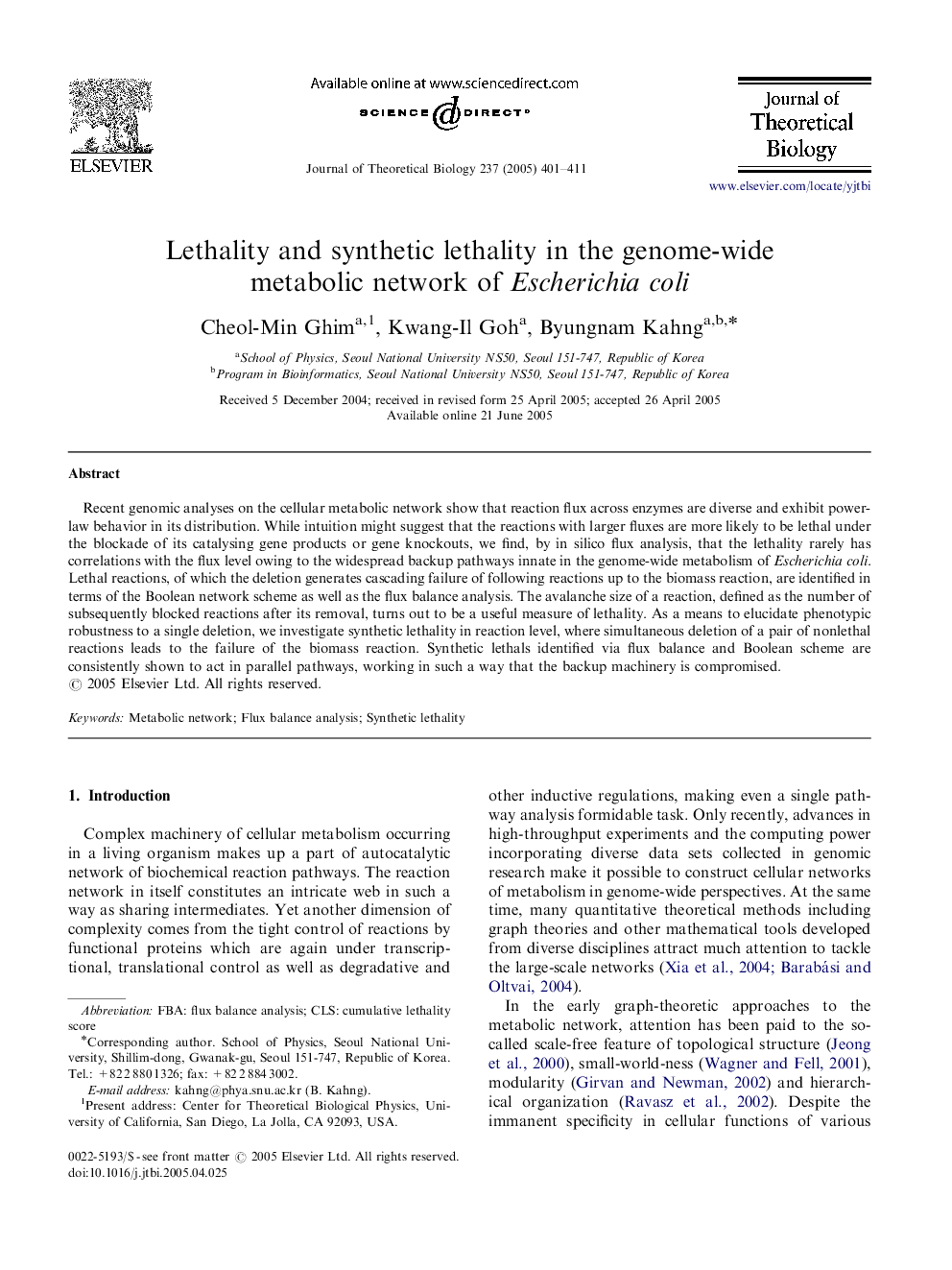| Article ID | Journal | Published Year | Pages | File Type |
|---|---|---|---|---|
| 9469587 | Journal of Theoretical Biology | 2005 | 11 Pages |
Abstract
Recent genomic analyses on the cellular metabolic network show that reaction flux across enzymes are diverse and exhibit power-law behavior in its distribution. While intuition might suggest that the reactions with larger fluxes are more likely to be lethal under the blockade of its catalysing gene products or gene knockouts, we find, by in silico flux analysis, that the lethality rarely has correlations with the flux level owing to the widespread backup pathways innate in the genome-wide metabolism of Escherichia coli. Lethal reactions, of which the deletion generates cascading failure of following reactions up to the biomass reaction, are identified in terms of the Boolean network scheme as well as the flux balance analysis. The avalanche size of a reaction, defined as the number of subsequently blocked reactions after its removal, turns out to be a useful measure of lethality. As a means to elucidate phenotypic robustness to a single deletion, we investigate synthetic lethality in reaction level, where simultaneous deletion of a pair of nonlethal reactions leads to the failure of the biomass reaction. Synthetic lethals identified via flux balance and Boolean scheme are consistently shown to act in parallel pathways, working in such a way that the backup machinery is compromised.
Related Topics
Life Sciences
Agricultural and Biological Sciences
Agricultural and Biological Sciences (General)
Authors
Cheol-Min Ghim, Kwang-Il Goh, Byungnam Kahng,
